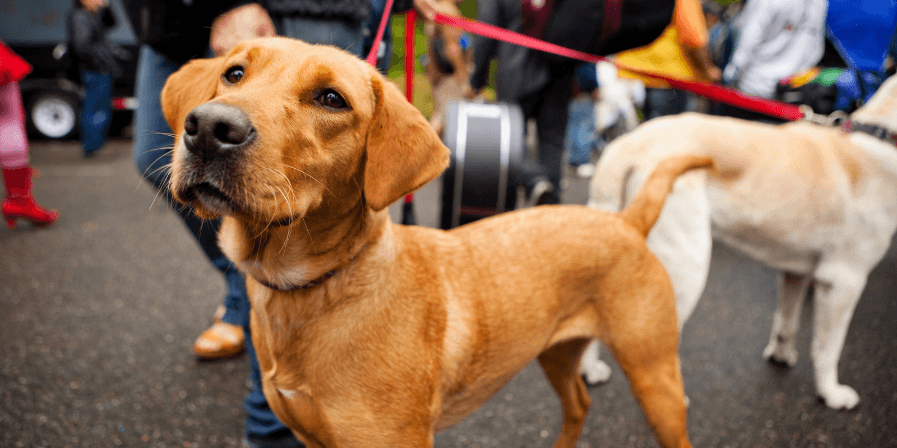Pet Safety Tips for Public Events

Whether it’s a community fair, an outdoor concert, a weekend market, or a dog-friendly café opening, public events can be fun opportunities to bond with your pet and enjoy the world together. However, what feels like a joyful gathering to us can sometimes feel overwhelming or even unsafe for our four-legged companions. Crowds, loud music, unfamiliar smells, and other animals can all create a stressful environment, especially for pets who aren’t naturally social butterflies.
So, should you take your pet along, or leave them at home? And if you do bring them, how do you ensure they stay safe, comfortable, and happy the entire time? Let’s explore how to prepare, what to watch for, and how to give your pet a safe and positive experience at public events.
Knowing Your Pet Before the Event
Every pet is different. Some dogs adore attention and are eager to greet every person and pup they pass. Others might be more reserved—unsure around strangers or sensitive to loud noises. And while it’s not common to see cats at public events, some leash-trained felines are brave enough to handle calm outdoor environments. But that’s rare—and definitely not for every cat.
Before heading out, it’s important to ask yourself a few honest questions. Does your pet enjoy crowds, or do they get anxious? Do they bark, pull, or panic in noisy environments? Are they comfortable walking near other dogs or children?
If you’re unsure, try a short, quieter outing first—like a dog-friendly café or a local park—before taking them into a large or loud event. You know your pet best, and it’s perfectly okay to opt out if the environment doesn’t suit their temperament. For some pets, the quiet comfort of home truly is the best place to be.
Preparing for a Safe and Enjoyable Outing
If you’ve decided that your pet is up for the adventure, some preparation will go a long way. The goal is to keep things smooth, low-stress, and safe—for both you and your furry friend.
First, make sure your pet’s vaccinations are up to date. Public spaces mean exposure to other animals and the germs they carry. Flea and tick preventatives are also a must, especially if you’re visiting grassy parks or wooded areas.
Identification is another non-negotiable. A collar with a clear ID tag is essential. Even better? A microchip. In an unfamiliar environment, pets can get startled and bolt. If that happens, proper ID is the fastest route home.
It also helps to bring a little “go-bag.” Think of it like packing for a toddler—water, snacks, clean-up supplies, and a familiar toy or blanket. A collapsible water bowl and a few treats can offer comfort and rewards throughout the event.
Before leaving, give your pet a proper walk or bathroom break. Let them burn off some energy and relieve themselves so they’re more relaxed and ready to handle new experiences.
Navigating the Event Together
Now that you’re out and about, it’s time to tune in to your pet’s body language. Their experience will be shaped by how observant and responsive you are.
Stick to quieter areas whenever possible. Avoid setting up too close to speakers or food trucks with strong smells that might cause excitement or overstimulation. If your dog is small, crowded walkways can feel like a jungle of stomping feet. Consider carrying them or using a well-ventilated pet stroller when things get tight.
Keep your pet close and never let them wander on a long, retractable leash. In crowds, it’s best to keep them on a short lead. This not only gives you more control but also protects them from tripping hazards or accidental run-ins with other animals.
Always be cautious when other pets approach. Not every dog is friendly, and not every owner is attentive. If someone wants to pet your dog or introduce their own, don’t feel pressured. It’s okay to politely decline if your pet seems nervous or overwhelmed.
And don’t forget—you’re your pet’s main source of comfort. Talk to them, offer treats, and check in frequently. A gentle scratch behind the ears or a reassuring voice can go a long way in helping them stay calm.
Watch for Warning Signs
One of the most important things you can do during any outing is pay attention. Pets may not be able to speak, but they’ll tell you everything through their body language and behavior.
Is your dog panting heavily even though they haven’t been running? Are they pacing, whining, or pulling toward the exit? Do they seem hyper-alert, ears pinned back, tail tucked? These are all signs of stress.
In extreme cases, dogs can go into sensory overload or even experience heat exhaustion—especially in warm weather. If your pet starts acting disoriented, drooling excessively, or becomes lethargic, you need to step away from the crowd immediately. Find a quiet, shaded spot, offer water, and give them a chance to cool down. In cases of suspected heatstroke or physical distress, don’t wait—call your vet or head to the nearest animal hospital.
Food, Trash, and Hot Pavement
It’s easy to overlook hazards in the excitement of a festival or fair, but some of the biggest risks are right under your feet. Trash cans overflowing with food scraps, kids dropping candy on the ground, or vendors offering samples—these can be temptations for a curious dog.
Keep an eye out for anything your pet might try to eat off the ground, especially foods like chocolate, grapes, onions, or cooked bones, which are toxic to dogs.
Also, remember that pavement, sand, or asphalt can become painfully hot under direct sun. If it’s uncomfortable for you to walk barefoot, it’s too hot for your dog’s paws. Opt for grass or shaded paths whenever possible, and take breaks often.
When to Call It a Day
Sometimes, despite your best efforts, the outing may prove to be too much. And that’s okay. Leaving early isn’t a failure—it’s you being a responsible and attentive pet parent.
If your pet starts refusing to walk, hides behind you, or shows signs of distress, don’t try to push through. What might seem like "just another hour" of fun to you could be extremely uncomfortable for them.
When you get home, give your pet plenty of time to rest and recover. Offer fresh water, a comfortable space, and extra affection. If they seem off the next day—excessively tired, refusing food, or showing unusual behavior—it’s a good idea to consult your vet.
Conclusion
Public events can be a wonderful way to share experiences with your pet, explore new environments, and strengthen your bond. But like any adventure, they come with their own set of responsibilities. It’s not just about bringing your pet along—it’s about making sure they’re safe, comfortable, and genuinely enjoying themselves.
There’s no one-size-fits-all approach. Some pets will thrive on the stimulation and social energy. Others will find peace in a quiet afternoon nap on the couch. What matters most is recognizing who your pet is—and making decisions based on their individual needs, not just your own excitement.
In the end, safety, love, and mutual respect are the ingredients for a great day out—whether it's at a festival, a market, or simply the local park.
FAQs
1. What should I pack for my pet when attending a public event?
Bring essentials like a leash or harness, ID tags, fresh water, a collapsible bowl, waste bags, a few treats, and a comfort item such as a blanket or toy. These help ensure your pet feels secure and stays hydrated throughout the event.
2. How do I know if my pet is too overwhelmed at a public gathering?
Look for signs like heavy panting, shaking, whining, pulling away, hiding, or refusing to walk. These are often stress signals. If your pet seems overstimulated, it's best to leave the event and help them decompress in a calm space.


 How can we help?
How can we help?